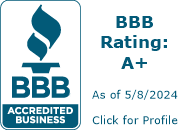Business Lines of Credit (LOC)
Business Line of Credit: A Flexible Financing Tool for Small Businesses
Quick facts about business lines of credit (LOC):
You only pay interest on the money you actually use
Both secured (with collateral) and unsecured options are available
Interest rates usually move up or down with the Prime Rate
Offered by banks, credit unions, and online lenders

What Is a Business Line of Credit?
A business line of credit (LOC) is a flexible loan that gives you access to a set amount of funds you can use when needed. It works a lot like a credit card: you borrow only what you need, repay it, and then the funds become available again.
LOCs are designed to help with short-term expenses and day-to-day cash flow needs, such as:
Purchasing inventory
Covering payroll
Repairing or replacing equipment
Funding marketing campaigns
Types of Business Lines of Credit
Secured Line of Credit
Backed by collateral such as accounts receivable or inventory
Lower risk for lenders, which can mean better rates
If you don’t repay, the lender can seize and sell the collateral
Unsecured Line of Credit
No collateral required
Easier for business owners, but harder to qualify for
Typically, smaller credit limits and slightly higher interest rates
Business Line of Credit vs. Term Loan
Term Loan: Borrow a lump sum upfront and repay it in fixed installments over a set period. Best for long-term investments like property or equipment.
Line of Credit: Borrow funds as needed, up to your limit, and repay them flexibly. Best for short-term needs and cash flow management.
Think of it this way: Term loans = one-time big purchases. Lines of credit = ongoing cash flow support.
How a Line of Credit Works
You’re approved for a maximum limit (say $50,000).
You can draw money anytime—via transfer, check, or even a business credit card.
You pay interest only on what you borrow, not on the full limit.
Once you repay the funds, the credit becomes available again.
💡 Many lenders charge an annual fee and may add transaction fees each time you draw funds. Some even require the balance to be paid down to zero for at least 30 days each year, to ensure you’re not fully dependent on the credit line.
Example Uses of a LOC
Seasonal business: A landscaping company uses a LOC to cover payroll in the winter when revenue slows, then pays it back during the busy summer season.
Marketing push: A retail store uses a LOC to launch an ad campaign that boosts sales, quickly repaying the debt with the new revenue.
Slow client payments: A consulting firm uses a LOC to manage expenses while waiting for large invoices to be paid.
Pros and Cons of a Business Line of Credit
Pros:
Flexible—borrow only what you need, when you need it
Helps smooth out seasonal or uneven cash flow
Lower interest rates compared to credit cards
Cons:
Harder for startups or businesses with poor credit to qualify
Risk of over-reliance—using it to cover ongoing losses can lead to debt trouble
Defaulting damages both business and personal credit
Who Qualifies and Who Offers LOCs?
Most lenders prefer businesses that:
Have been operating at least 2 years
Show steady revenue and profitability
Have good credit history
Where you can apply:
Commercial banks and community banks
Credit unions
Online lenders
SBA-backed programs (for newer businesses, under 2 years old)
Credit limits can range from $5,000 to over $500,000, depending on the lender and your business track record.
What to Know Before Opening a LOC
Fees: Some lenders charge setup fees, annual fees, or transaction fees.
Zero-balance requirement: You may have to pay down your balance to $0 for part of the year.
Call provision: Lenders can sometimes demand immediate repayment, so don’t rely on a LOC as your only financial lifeline.
Pre-approval timing: The best time to apply is before you urgently need the funds, when your business is financially stable.
How to Apply for a Business Line of Credit
Be ready to provide:
Business financial statements and tax returns
Personal financial information of owners
Accounts receivable and inventory details
A 2–3 year financial projection showing how you’ll use the LOC and repay it
A strong business plan and good credit history make approval more likely.
Key Takeaways
A business line of credit is one of the most flexible financing tools available to small businesses. It’s ideal for covering short-term needs, smoothing cash flow, and seizing opportunities without draining your working capital.
👉 Bottom line: If your business has seasonal cash flow swings or needs a financial cushion for growth opportunities, a line of credit can give you the flexibility you need—just be sure to manage it wisely.
Disclaimer: * The 0% is for a limited period of time, your initial time period and final rate will be based on your qualifications and program offerings at time of application and approval. All programs are subject to change without notice. Submitting your business funding application will not impact your personal credit score. However, if you choose to proceed with an offer, certain funding options may require a hard credit inquiry. ChicagoBusinessLoans.com is not a direct lender and does not make credit decisions. Approvals are not guaranteed and are subject to bank/issuer decision. We do not provide legal, tax, or financial advice. Please consult a licensed professional for personalized guidance.
Leave your email and we will contact you in 24 hours

